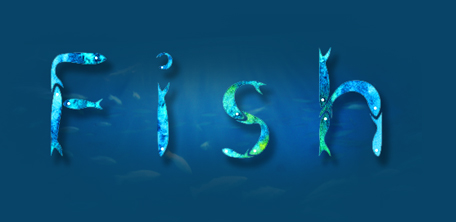
Fishes are cold blooded and dwell in the water, have scales and fins (with a few exceptions), have gills which they use for respiration and most all reproduce sexually via external reproduction. (The eggs are fertilized outside of the body)
Water, without a doubt, is the natural habitat of fishes. However the phrase “feel like a fish out of water” may mean nothing to the ones that can spend significant amounts of time out of it. The mangrove rivulus or mangrove killifish is one example of a fish that wasn’t paying attention when it was declared that birds live in trees and fish in water. This 2 inch little fish can spend several months out of the water hidden away in rotten tree trunks and branches. They are capable of altering their biological makeup in order to breathe air. Another absentminded candidate is the mudskipper who loves hanging out and snacking with mates on land and only goes underwater to hide from predators. Absence of lungs has these fishes breathing through their skins, carefully keeping their gills moist with sea water that they store internally.
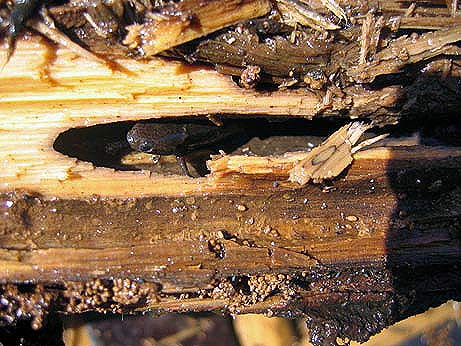
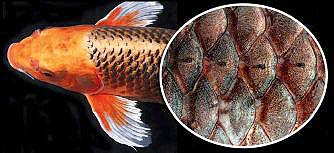
Scales of different types exist; like the rough sometimes sharp scales of a shark, pointed scales of a blowfish and so on. These are common evolutionary adaptations shielding the body of a fish from the environment, protecting them from predators, reducing the drag and thus enabling efficient movement, and sometimes, a combination of these. This characteristic again is not present in all fishes. For example the catfish, eel and some other fish do not have scales.
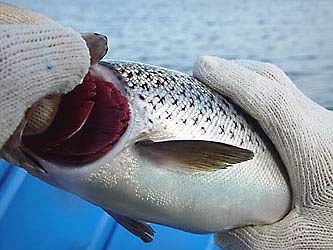
Gills. This is one of the basic criteria that set fish apart from other classes of vertebrates. Gills are a necessity for underwater breathing. Take the Whales for instance, why are they dumped in the mammal category and not fish? It’s because they don’t have gills but lungs. Gills are respiratory organs that take the carbon dioxide from the blood and exchange it with the oxygen-filled water.
Fins are another characteristic of most fish, providing manoeuvrability when in motion. They’re not much help in propulsion. There are many types of fin; some of the most common are the tail fin, dorsal fins, a pair of side fins and an anal fin. However there are no specific sizes, shapes or even functions of a particular type of fin. However many fish often exercise their tail fin for motion. The sea horse on the other hand uses its dorsal fin instead and does not possess a tail fin.
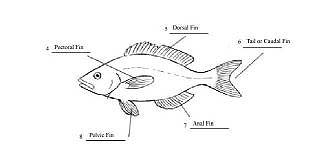
Ectothermy is the act of depending on outside environment to regulate body temperature via conduction or radiant heat. Almost all fish are ectothermic or cold-blooded. This makes them highly vulnerable to environmental changes like global warming. What mammals do is the exact opposite. They rely on internal processes to maintain a constant body temperature, called endothermy.
Fish reproduce sexually, usually via external reproduction. Not all fish use external reproduction though, sharks are an example of this difference. Male sharks have paired copulatory organs called claspers, one of which is inserted into the female's cloaca, depositing sperm inside her. 60% of the shark species give birth to live young sharks - this is called viviparity, in this case the young remain in the mother's uterus until they are born, while the remaining 40% lay eggs called oviparity. Here the laid eggs are endowed with tendrils that allow them to attach to seaweed, corals or the ocean floor. The eggs get their nourishment from the yolk sac like in birds, and take several months to hatch. In some species the eggs remain inside the female for a longer period of time before they are laid and thus affording them more time to develop before being let out in vulnerable immobile egg cases.
The vast ocean is packed with loads of different creatures. They all have their own preferred diet and are in turn the preferred diet of some other creature. So how do fishes protect themselves from predators? Well they have a number of techniques up their sleeves. Camouflage being one of the most overused defence techniques by underwater creatures. Many sea creatures can change colour if and when they please. Brightly coloured fish take refuge in the colourful corals adorning the ocean floor while those with patterns of lines try and blend in with the surrounding rocks. Small fish also believe in the staying united we stand, divided we fall - they swim along in groups called schools! What are the advantages? Well a group of small fish swimming together gives the illusion of a much bigger fish; also there are more eyes to spot trouble in the area. It is difficult for a vision oriented predator to single out one fish in the school. However the tiny schooling fish take their chances at not getting eaten as a predator cannot eat an endless amount of. The flying fish has a unique defence – Yes, it flies away from predators! It uses its rapidly beating tail fins to break through the water surface and can glide for about 200 meters (655 feet) over the water at a height of 1.2 meters (4 feet) using its pectoral fins. The others, who aren’t so lucky, take a more aggressive approach towards their predators. They stay where they are and unleash spines and/or poison that can be fatal to its predator. Sharks use their long tails to stun predators.
Some of them are the anglerfish, clown fish, parrot fish, puffer fish, sailfish and the electric eel.
The male Anglerfish is really possessive of the female and sticks to her like a parasite and we mean that in the most literal way possible. The male is significantly smaller than the female and when he does find a female he latches on to her with his sharp teeth. Overtime the male becomes one with the female, connecting to her bloodstream and looses all his internal organs as well as his eyes. The female sometimes carries six or more males on her body.
They are found in the earth’s most inhospitable habitat – the lonely lightless bottom of the sea. The female possesses a piece of dorsal spine that protrudes above her mouth like a fishing pole. This built in rod baits prey near enough to be snatched. They can pick on other creatures twice their own size. The anglerfish have big mouths and elastic bodies allowing them to swallow prey about twice their own size.
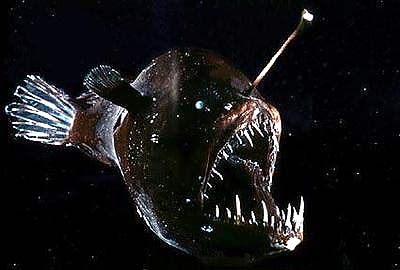
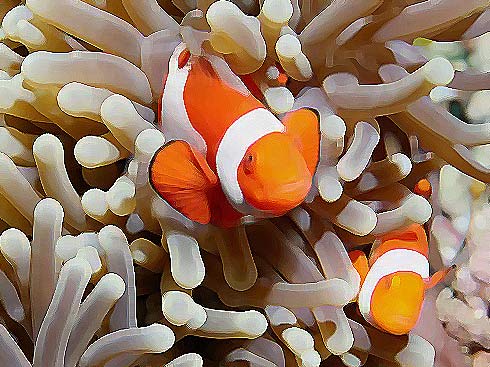
All Clownfish are born male and can choose whether to become female. But they do this only to become the dominant female of a group. Now isn’t that just awesome! But once they switch their sex they can’t switch back. The clownfish or the clown anemone fish are bright orange with three distinctive white bars and are found in the shallow waters of the red sea, western pacific and the Indian Ocean. The clownfish is impervious to fish-eating anemone's lethal sting owing to the protective layer of mucus on its skin.
Putting yourself in your partners’ shoes helps understand them better and nobody does this better than the clownfish. The clownfish make a balanced couple, probably because “she” once was a boy “herself” and knows what it’s like being one. It’s a give-and-take relationship. In exchange for food scraps and safety from predators the clownfish scares off intruders and preens its mate, removing parasites. Clownfish perform an elaborate dance with another anemone before moving in gently making contact with its tentacles with different parts of their bodies thus warming up to their host.
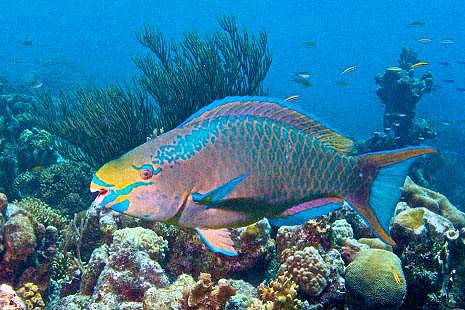
The Parrot fish is unique in that it can change its colour, shape and even gender anytime in its entire lifespan. This makes them a classification nightmare. Some male parrotfish maintain harems of females. And if the male dies one of the females change gender and colour and becomes the dominant male. Their diet consists mainly of algae extracted from coral ripped off reefs which go on to be dismembered by grinding teeth in the fish’s throat and later join the remaining algae in the polyps inside. Then there are the pajamas, a transparent cocoon made of mucous secreted from an organ on their heads. This cocoon is said to protect them from nocturnal predators like moray eels and making them harder to locate by masking their scent. The meat of the parrot fish was once considered “royal food” in Polynesia, only to be eaten by kings. Now it is a delicacy in many parts of the world.
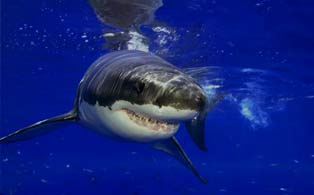
The legendary great white shark is portrayed as a terrifying, blood-thirsty fiend out to get you the moment you dip your toe in the ocean. However, recent scientific research has found that these fascinating fish are naturally curious and just indulge in some “sample biting” before releasing their victim. As research on this elusive predator continues their infamous title as the cold-blooded, mindless killing machine is gradually fading.
Great whites are the largest predatory fish in the world and grow to an average of 15 feet in length though specimens exceeding 20 feet have been recorded. Their food includes seals, small toothed whales, sea lions and even sea turtles, and carrion. Their inbuilt ability to sense the tiny electromagnetic fields generated by animals as well as their acute sense of smell only makes it easier to locate their prey. They have slate-grey upper bodies and white underbellies from where they get their names. They have powerful tails and streamlined, torpedo-shaped torsos and can touch a speed of 15 miles per hour propelled by those powerful tails.
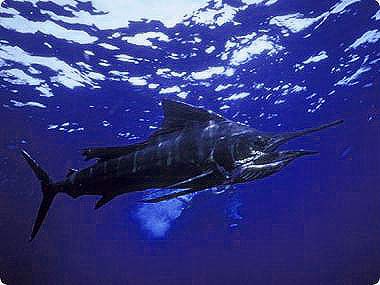
The Sailfish is the fastest fish in the ocean and can definitely give the cheetah a “run” for his money. It can take on speeds of about 68 mph (110 kilometres). So why is it christened Sailfish? It’s because of their magnificent dorsal fin that stretches almost the length of their body is much elevated in comparison to their bodies. They are large size, 5.7 to 11 ft, and spirited fight they put up makes them desirable to trophy fishers. There are just two main sub-species of sailfish – Atlantic and Indo-Pacific. They are members of the billfish family and have an upper jaw that juts out way past their lower jaw forming a distinctive sword-like structure. They are blue to gray in colour with white underbellies and can be found around the warm temperate parts of the ocean surface usually far from land. Feeding on schools of small fish like sardines and anchovies and even on octopus and squid when they can get some, the meat of the sailfish is tough and doesn’t make for a good meal but a rather pricey game fish.
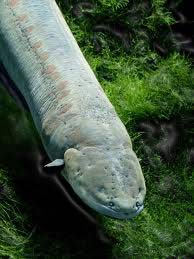
The Electric Eel have really bad eyesight but the electric charge they can generate is enough to power five bulbs! 600 volts of electric charge is used to keep predators at bay and stun prey. Their bodies contain electrical organs and 6000 specialized cells that store power like tiny batteries. They are called electrocytes and when threatened or while capturing prey these cells let out a burst of at least 600 volts. They feed mainly on fish but can make do with amphibians, small mammals and even birds. They are capable of generating a low level charge of less than 10 volts to help them navigate and locate prey. Human deaths by this electrifying creature are not very common, but getting multiple shocks by them can cause respiratory or heart failure. They have flat heads and long cylindrical bodies that are green or greyish on the top and yellowish underneath. They can grow really long up to 8 feet and weigh about 44 pounds (20kgs).
G Kowledge of | 4 Comments >>
4 Comments
quality information I will bookmark this and keep an eye on updates. I dont know if my comment is going to pop up because Im not very tech savvy, hopefully I can get this right!
Good to become visiting your weblog once more, it continues to be months for me. Well this article that ive been waited for so long. I will need this article to total my assignment within the school, and it has exact same topic with your post. Thanks, wonderful share.
I like the valuable info you offer inside your articles. I'll bookmark your weblog and check once more here often. I'm quite confident I'll learn a great deal of new stuff appropriate hear Finest of luck for the next.
Leave Comment
Your email address will not be published. Required fields are marked.
An impressive share,